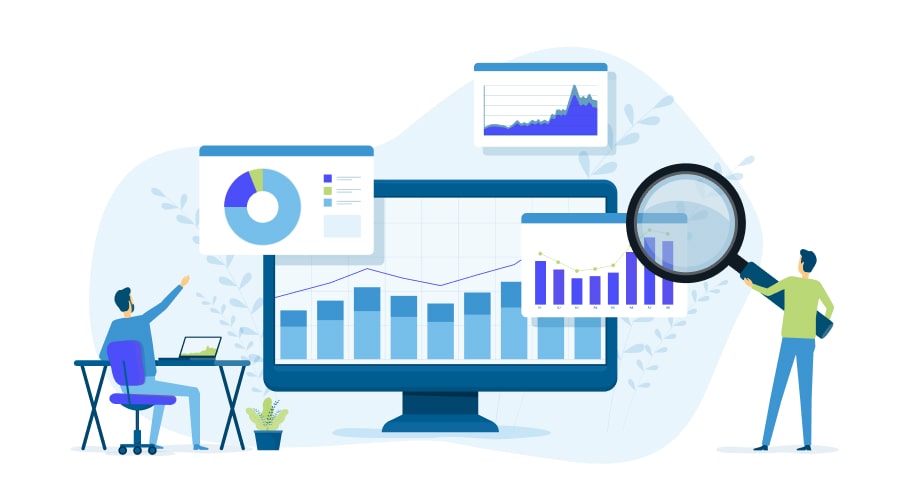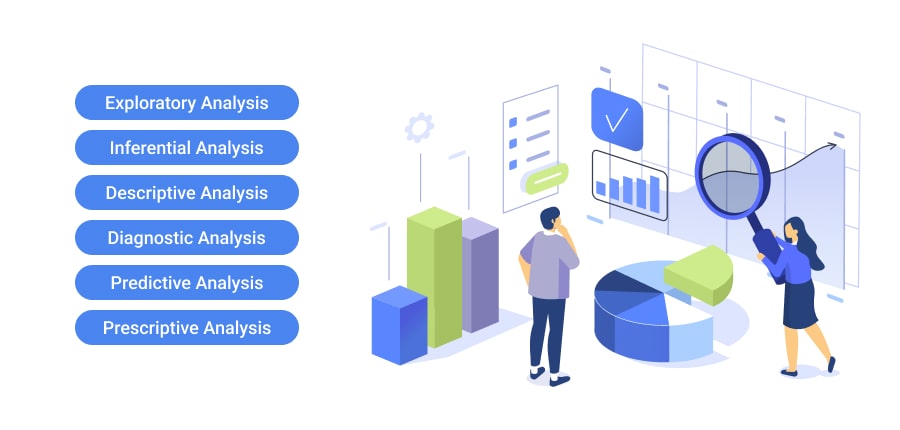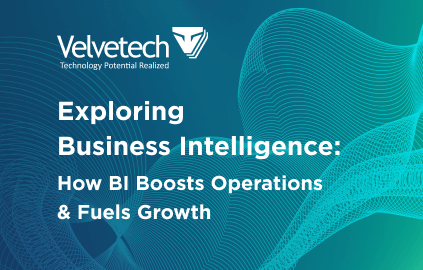Modern companies across industries are on the hunt to outpace competitors and score any advantage they can. Everybody wants to gain a better understanding of past organizational performance so that it can be improved in the future.
As a result, data analysis has become a crucial part of business. The majority of companies continuously collect digital information, but not all of them capitalize on it properly. As you can imagine, this is where data analytics can help.
However, the insights you obtain depend on the data analysis techniques that you apply. Some approaches will help you understand an occurrence, while others can even forecast what has yet to happen. So, how do you know which data analytics methodology to pursue?
If you’re wondering how to analyze data effectively, that’s the question we’ll answer today. We’ll go through the various types of data analysis techniques and discuss the challenges each one helps solve. That way, you’ll be able to determine which methods are right for your next software project.
What is the Role of Data Analysis in Business?

Data analysis is the process of cleaning, transforming, and processing the raw data that a business collects and deals with to extract relevant insights for better decision-making. The findings of data analysis are typically presented as interactive charts, tables, or graphs within intelligent dashboards.
Companies that implement data analytics technology tend to observe the following benefits:
- Better customer understanding
- Reduction in operational costs
- Quick identification of trends
- Enhanced understanding of company performance
Organizations from a variety of industries employ data analytics. From insurance firms to healthcare companies, no matter which sphere you work in, chances are high that you can benefit from this technology.
BI for Business
Find out the secrets of how business intelligence boosts operations and what BI tools and practices drive data analysis.
Main Types of Data Analysis for Companies to Employ: Techniques and Methods

When it comes to the data analytics process, the selection of the appropriate methodology and techniques is vital for ensuring accurate and reliable results.
There are different methods of data analysis used by companies today. Some are similar to each other, some are complementary. Below, we’ll focus on the six key ways of analyzing data that we believe to be most frequently used in various software projects. Let’s take a look.
1. Exploratory Analysis
The goal of this type of analysis is to visually examine existing data and potentially find relationships between variables that may have been unknown or overlooked. It can be useful for discovering new connections to form a hypothesis for further testing.
With an exploratory analysis, you try to get a general view of the data you have on-hand and let it speak for itself. This approach looks at digital information to find relationships and inform you of their existence, but it does not establish causality. For that, you’d have to conduct further analytical procedures.
2. Inferential Analysis
This type of analysis is all about using a sample of digital information to make inferences about a larger population. It is a common statistical approach that is generally present across various types of data analysis, but is particularly relevant in predictive analytics. This is because it essentially allows you to make forecasts about the behavior of a larger population.
Here, it’s important to remember that the chosen sampling technique dictates the accuracy of the inference. If you choose a sample that isn’t representative of the population, the resulting generalizations will be inaccurate.
3. Descriptive Analysis
Now, we’ll be going into the terminology that is most widely used in the context of software development and that you may have already heard of.
Descriptive analysis is probably the most common type of data analysis employed by modern businesses. Its goal is to explain what happened by looking at historical data. So, it is precisely what is used to track KPIs and determine how the company is performing based on the chosen metrics.
Things like revenue or website visitor reports all rely on descriptive analysis, as do CRM dashboards that visually summarize leads acquired or deals closed. This approach merges data from various sources to deliver valuable insights about the past. Thus, helping you identify benchmarks and set new goals.
Find out how we helped a FinTech Company Unify Data From Disparate Systems
Of course, this technique isn’t very helpful in explaining why things are the way they are or recommending best courses of action. Hence, it’s a good idea to pair descriptive analysis with other types of data analytics.
4. Diagnostic Analysis
Once you’ve established what has occurred, it’s important to understand why it happened. This is where diagnostic analysis plays a role. It helps uncover connections between data and identify hidden patterns that may have caused an event.
By continuously leveraging this type of data analysis, you can quickly determine why issues arise by looking at historical information that may pertain to them. Thus, any problems that are interconnected can be swiftly discovered and dealt with.
For example, after conducting a descriptive analysis, you may learn that contact center calls have become 60 seconds longer than they used to be. Naturally, you’d want to find out why. By employing diagnostic analysis at this point, your analysts will try to identify additional data sources that may explain this.
After looking at real-time call analytics, they might discover that some newly hired agents are struggling with finding relevant information to help the client, and this causes extra time to be spent on the search. Now that the problem is clearly identified, you’ll be able to deal with it in the most suitable manner.
Discover how a leading insurance firm benefited from a Real-Time Call Analytics Platform
5. Predictive Analysis
Now we’re moving on to some of the most exciting types of data analysis. Predictive analytics, as the name suggests, delivers forecasts regarding what is going to happen in the future. Often, it incorporates artificial intelligence and machine learning technologies to provide more accurate predictions in a faster manner.
Read up on the Role of AI in Business
Predictive analysis usually looks at patterns from historical data as well as insights about current events to make the most reliable forecast about what might happen in the future.
For example, in the manufacturing industry, historical information on machine failure can be supplemented with real-time data from connected devices to predict asset malfunctions and schedule timely maintenance.
6. Prescriptive Analysis
Finally, we’ve reached the last data analysis approach we’ll discuss today. The goal of prescriptive analysis is to suggest what is the next best course of action that helps eliminate a problem or capitalize on an upcoming trend. Essentially, this type leverages all of the previous ones we’ve discussed to provide you with a suitable recommendation.
Prescriptive analysis is at the forefront for data-driven companies that are eager to embrace AI, ML, and other innovative technologies to improve decision-making. It requires a real commitment from the organization, so it’s important to first understand whether it is your most pressing priority.
As an example, in the supply chain and logistics area, prescriptive analytics can help with route optimization. Algorithms can evaluate traffic conditions in real-time and provide drivers with a recommended route that will be faster or might employ less fuel.
Pick the Right Types of Data Analysis For Your Project
As we have seen, the goals of each type of data analysis differ and companies will often rely on several methods to obtain the insights that are truly valuable to their business. Nonetheless, everything begins with having a good data analysis process in place so that algorithms can run on high quality digital information and be of real help.
If you’re looking to better manage your data and start employing analytical solutions — don’t hesitate to contact Velvetech. Our team has vast expertise in delivering data analysis services that drive business growth and positively impact the bottom line.































